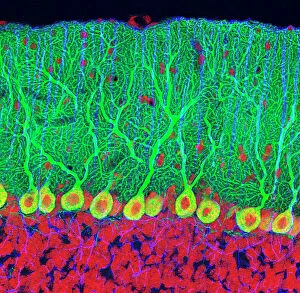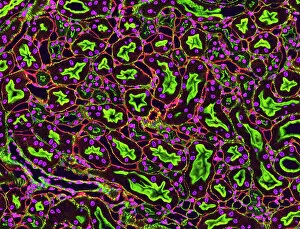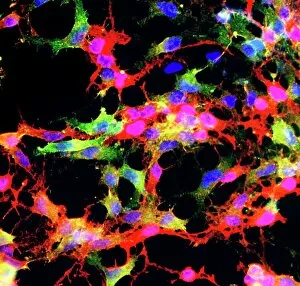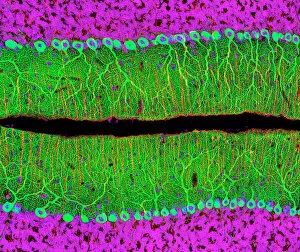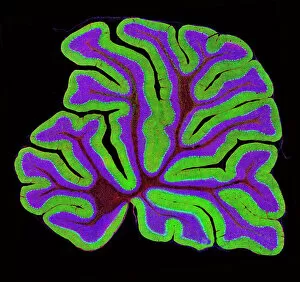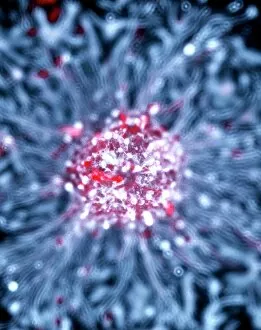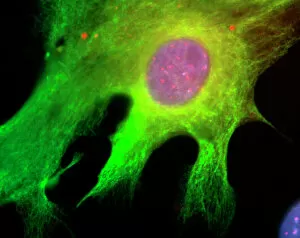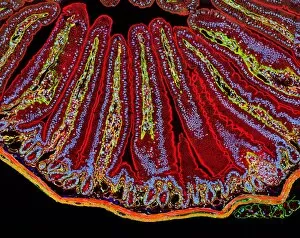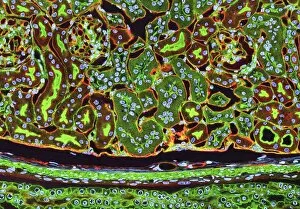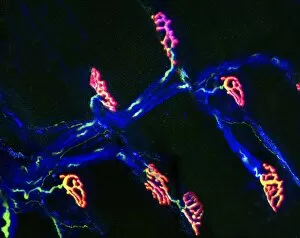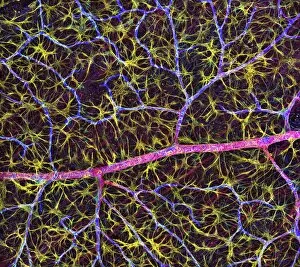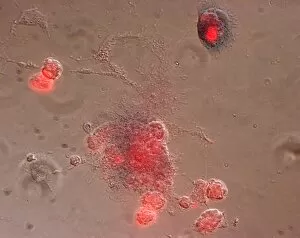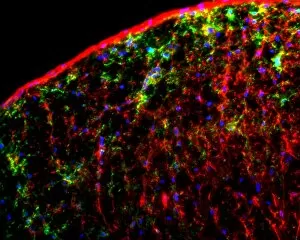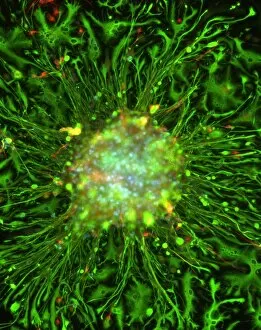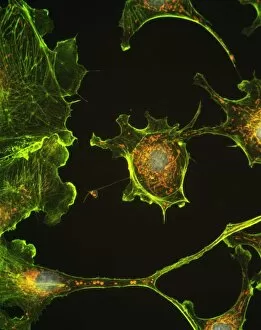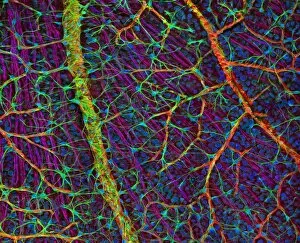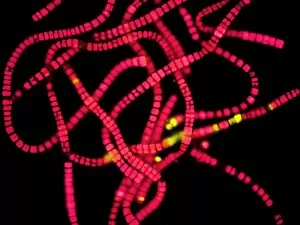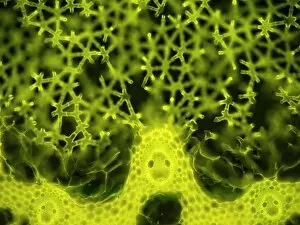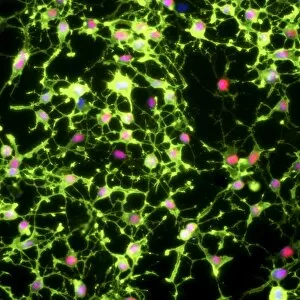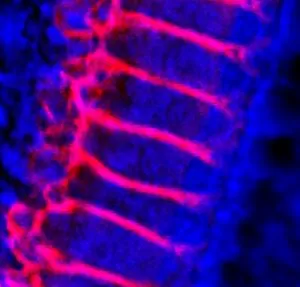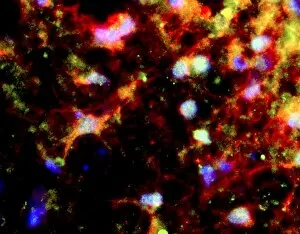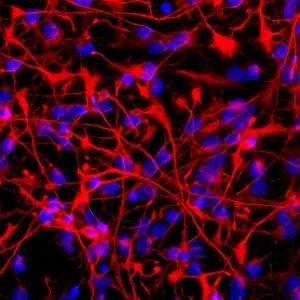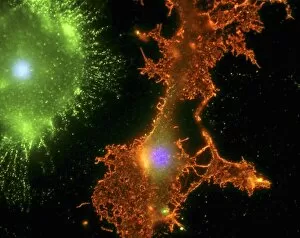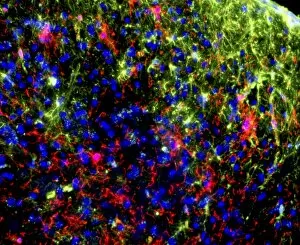Fluorescent Light Micrograph Collection
"Unveiling the Intricate World
For sale as Licensed Images
Choose your image, Select your licence and Download the media
"Unveiling the Intricate World: A Fluorescent Light Micrograph Journey" Step into the mesmerizing realm of cellular structures and witness their vibrant beauty through fluorescent light micrographs. Delve deep into the intricate workings of various tissues and cells, as each image reveals a unique story. Marvel at the Purkinje nerve cells in the cerebellum, with their elaborate branching patterns resembling delicate trees in a forest. These specialized neurons play a crucial role in coordinating movement and maintaining balance. Explore kidney tubules in section, where an array of tiny tubes intricately filter waste products from our blood. Witness how these tubules form an essential part of our renal system, ensuring proper excretion and maintaining fluid balance within our bodies. Behold the glial stem cell culture captured under this illuminating technique. Glial cells are often referred to as "supporting actors" for neurons, providing structural support and nourishment to ensure optimal brain function. Immerse yourself in neural stem cell culture imagery that showcases the remarkable potential for regeneration within our nervous system. These versatile cells hold promise for future therapies aimed at repairing damaged neural tissue caused by injury or disease. Return once more to admire Purkinje nerve cells within the cerebellum structure – their distinctive appearance reminding us of nature's artistry even on a microscopic scale. Witness oligodendrocyte nerve cells, responsible for producing myelin sheaths that insulate neuronal axons. This insulation enables efficient transmission of electrical signals throughout our nervous system – like highways guiding information flow between different regions of our body. Encounter astrocyte nerve cells repeatedly appearing across multiple images - highlighting their significance as star-shaped guardians protecting neurons from harm while also regulating chemical composition around them. Observe kidney tubules again; they serve as vital components involved in filtering waste materials before urine formation – showcasing nature's ingenious design to maintain internal stability continually. Finally, explore small intestine villi in section, where the surface area is magnified to maximize nutrient absorption.

